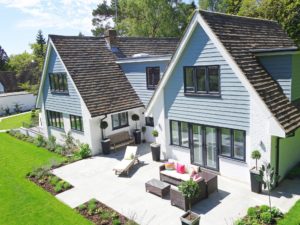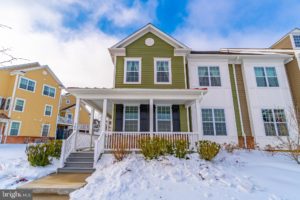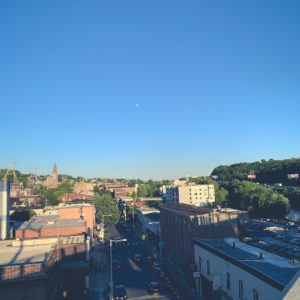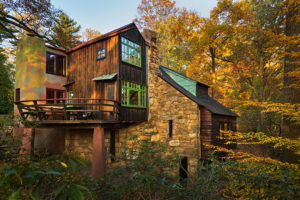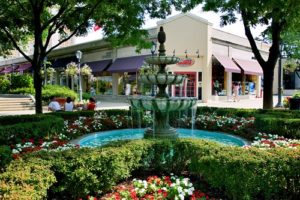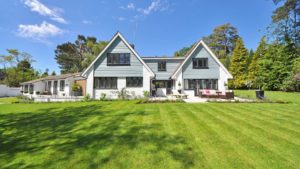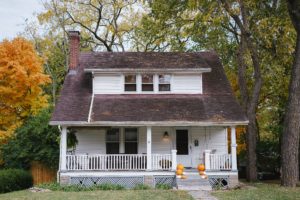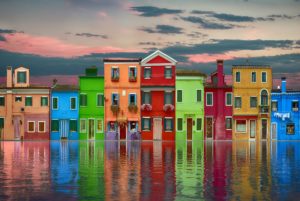
One of the main excitements around owning a home is the ability to customize it as you see fit. When living in an apartment it isn’t uncommon to wish your kitchen or bedroom was a different color. Social media gives us all a window into the lives of others, and their homes, and it is easy to have our inner designer come alive when presented with the millions of ideas shared online. However, while we are only now becoming comfortable sharing the insides of our homes with hundreds if not thousands of strangers everyday, the exterior of the house---it’s curbside view---has always been the first impression of the homeowner. While some people may prefer the cookie cutter suburban approach, with a house that matches those around it---others prefer to stand out with eye-popping colors and designs. Every house has a color, so we’ve compiled a list of some to help current and prospective homeowners see how their preferences and choices stack up against others.
White: Responsible, indecisive
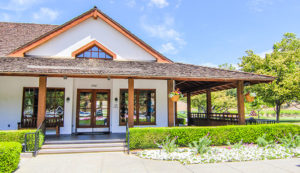 The white baseboard house has become a classic staple of suburban Americana. Timeless and steady, there are very few backdrops or gardens that could clash with this neutral abode. While it is this flexibility that has helped the white house become such a classic, however, there is something to be said about those who are so committed to flexibility. While it is true that there are few if any designs or colors that could truly clash with a white house, that doesn’t necessarily mean that they’re all complimentary. Variety is the spice of life and sometimes the best styles are the riskiest. That doesn’t mean that white is always the safest option, but there is a reason artists tend to prefer a blank white canvas. The white house’s blankness can at times almost be imposing, and the flexible nature of the color is bound to inspire some creative types, perfect for any fans of annual flowers.
The white baseboard house has become a classic staple of suburban Americana. Timeless and steady, there are very few backdrops or gardens that could clash with this neutral abode. While it is this flexibility that has helped the white house become such a classic, however, there is something to be said about those who are so committed to flexibility. While it is true that there are few if any designs or colors that could truly clash with a white house, that doesn’t necessarily mean that they’re all complimentary. Variety is the spice of life and sometimes the best styles are the riskiest. That doesn’t mean that white is always the safest option, but there is a reason artists tend to prefer a blank white canvas. The white house’s blankness can at times almost be imposing, and the flexible nature of the color is bound to inspire some creative types, perfect for any fans of annual flowers.
Beige: Risk Averse, calm, non-confrontational
While white is a universal highlight, beige is a pure neutral. Stable and almost-but-not-quite imposing, beige highlights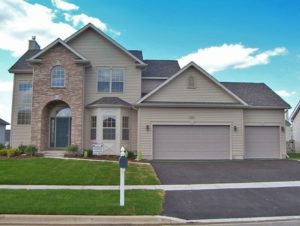 structure and serenity---if not one with nature than certainly one with the neighborhood. While white begs for pairing with bright and bold colors, beige is best when mixed in with other neutrals and earth tones. While not exactly warm, there is something very comforting in the structure and predictability of beige. However, some may find the color too ‘boring’ or ‘easy’. Little needs to be done with beige to ‘pull it off’ and for some of us looking to express or experiment with a home's curb appeal, beige may yield too few opportunities.
structure and serenity---if not one with nature than certainly one with the neighborhood. While white begs for pairing with bright and bold colors, beige is best when mixed in with other neutrals and earth tones. While not exactly warm, there is something very comforting in the structure and predictability of beige. However, some may find the color too ‘boring’ or ‘easy’. Little needs to be done with beige to ‘pull it off’ and for some of us looking to express or experiment with a home's curb appeal, beige may yield too few opportunities.
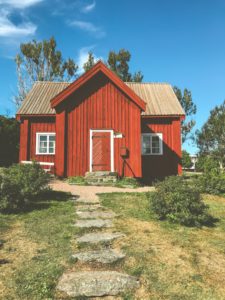
Red: Adventurous, bold
Bright, attention grabbing, hot---red is everything that beige and white aren’t. Yet red certainly i s not an insult on the eyes. While red certainly can turn heads, when done right it much more harkens to the rustic aesthetic of red barns and rugged wilderness. Complimenting green, conifers and heavy pop against red, helping the cozy aesthetic. Yet in these examples it it still the house that takes centerstage, in the same way that the red roses take among the green bushes. Red is unyielding and unapologetic and as such requires the hand and spirit of someone just as bold.
Yellow: Confident, secure
For as bold as is red, yellow is warm. Yellow suns, yellow flowers, yellow smiley faces. While less bold than red, yellow is nevertheless an incredibly bright color, complimenting and complemented by plenty of greenery, while also standing its own against open yards and blue skies. If white is the classic suburban choice, yellow is a close second, with plenty of shades to choose from. Backing a runner up takes confidence, and yellow’s attention-grabbing nature also radiates confidence. Undertaking a yellow house is a sign that you are confident with the commitment and with your abilities to make the most out of this wonderful color choice!
Green: Creative, introspective
Gentle and unique, green is a bit of a black sheep among the standard colors. Perhaps this is due to the tendency for most people to strive for a green yard or green garden, a green house may come across as redundant or perhaps too dark. However, while green takes a little more thought, there is an heir to green houses all their own. Unique, but not as eye catching, green is a color for someone who values the journey over the destination. While onlookers may not think about the choice you made, or the thought you put into it, the creativity it speaks to is one for you to enjoy for years to come.
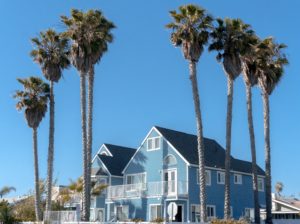
Blue: Outgoing, optimistic
Calm, serene, while blue may conjure the images of gentle waves and deep shimmering pools, a blue house is a more adventurous choice than it appears at first glance. Blue is certainly a cooler and more neutral color but is nonetheless colorful and uplifting. Blue is associated with youth and energy, positivity. A blue house might not work for everyone or in any environment, but a little bit of work and effort will do wonders with the color. A blue house is one that will require some more forethought into it’s presentation, although is much more flexible than one might expect. Nautical garden décor perhaps? Why not! Blue is a color for inspiration and rejuvenation, for the lively and fun-loving.

Mauve: Appreciative, thoughtful
Professional but pretty, subtle but potent. Mauve is interesting in how it is often overlooked as a potential house color, yet how lovely and powerful the color can be. Mauve can be thought of as an almost ‘next-level’ beige. While mauve might not top many lists as a favorite house color, a nice mauve house is anything but forgettable. Poised and deliberate, mauve requires planning---not because it is a difficult color to pair, but because it is much more outside of the box than other neutral tones.
Pink: Original, passionate
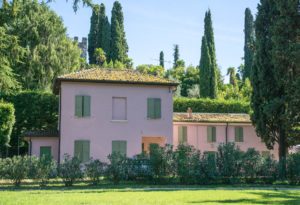
Bright, cheery, and a little quirky, pink is perhaps the most controversial color on our list. From pastel to bubblegum, pink is the type of color you have to choose, and what a choice it is! A pink house says more about yourself than perhaps any other color, and that’s exactly how you like it! While some may associate pink with femininity, pink is also an incredibly vibrant color. Much like yellow, pink pops beautifully against both green and blue, and is much easier to pull off than one might suspect. However, it is this apprehension around pink that makes it’s fans so proud and unique. Seldom is the neighborhood with more than one pink house.
Brown: Reserved, stable
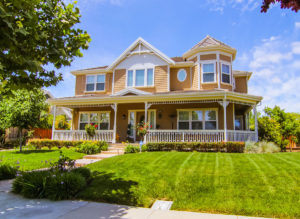 Rustic, stable, strong. Darker and bolder than beige, with the same rusic heir as red, brown is arguable the oldest color variety for houses. Starting the unpainted wooded cabins and shelters of early man, brown is not just a natural and earthy color, but that harkens back to a time when shelter was not exchanged but instead carved out of the landscape. Yet I would hesitate to call brown old-fashioned or daunting. Instead it is a strong and noble color, one that does not demand decoration but instead bares the utility of the house as it’s own style. Brown houses tend to look best when accompanied with deep rich colors and greenery, or with bright pastels that pop against it’s silhouette. Unlike other neutrals brown does not so easily blend in to the environment as much as it compliments it. While not uncommon as pink, brown houses will likely stand as a centerpiece of a neighborhood, not that those who choose brown are doing it for the attention or approval of others.
Rustic, stable, strong. Darker and bolder than beige, with the same rusic heir as red, brown is arguable the oldest color variety for houses. Starting the unpainted wooded cabins and shelters of early man, brown is not just a natural and earthy color, but that harkens back to a time when shelter was not exchanged but instead carved out of the landscape. Yet I would hesitate to call brown old-fashioned or daunting. Instead it is a strong and noble color, one that does not demand decoration but instead bares the utility of the house as it’s own style. Brown houses tend to look best when accompanied with deep rich colors and greenery, or with bright pastels that pop against it’s silhouette. Unlike other neutrals brown does not so easily blend in to the environment as much as it compliments it. While not uncommon as pink, brown houses will likely stand as a centerpiece of a neighborhood, not that those who choose brown are doing it for the attention or approval of others.
No properties found.
